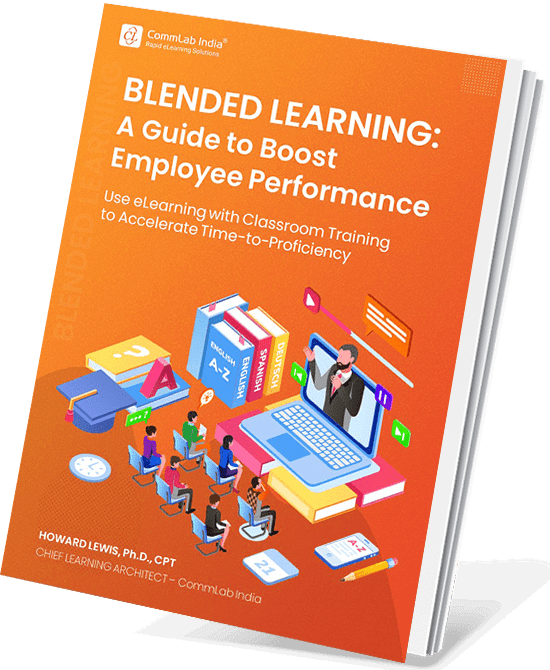Blended Learning: Integrating Classroom Training with E-learning

We have all heard how e-learning has wooed learners as well as organizations with its enticing benefits which offset the disadvantages of classroom learning. We have also heard about certain areas where classroom learning proved to be more effective as those areas gelled more with classroom learning instead of e-learning. A small example would be sales skills training which requires role plays, group discussions and enactments from the instructor and trainees in order to be effective. So are e-learning and classroom learning two different worlds which exist independent of each other? If you have heard about the silver bullet in the learning industry “blended learning”, then your answer to the previous question would be a big no.
→ Download Now: Blended Learning — A Guide to Boost Employee Performance [eBook]
What exactly is blended learning? Blended learning is the correct mix or integration of classroom and e-learning, providing the best of both worlds to learners. Blended learning involves both online and face to face instructions, thus providing learners a comprehensive learning experience which includes the benefits of classroom training along with flexibility and ease of e-learning. The goal of both e-learning and classroom learning is to make learners learn better. This goal can be achieved easily when these two methods of learning are integrated in a proper way and delivered. There are mainly three ways one can integrate classroom learning with e-learning.
Pre-classroom training
E-learning can be added before classroom training, as in providing learners online material of a certain topic that is to be discussed later in the classroom. This gives learners a general idea of what the topic would be about, thus cutting the classroom time and making learning more effective.
For example, prior to a classroom training session, a trainee can be given online material about the training. This would help him understand the topic better when he sees it implemented later as he already has a foundation. As the online material can be accessed by learners at their own time and pace, by the time the training session starts, everyone would be up to speed.
In this way, self-paced learning can be provided along with a clear instructor led learning experience which finally leads to the achievement of goals– making the learner learn better.
Post-classroom training
This type of integration consists of adding e-learning after the classroom learning. No matter how effective a learning process is, it won’t be fruitful unless the learner retains the gained information. Often, it is not possible to retain what is learned in the classroom over a period of time.
According to a recent statistic by certifyme, e-learning has proven to increase knowledge retention by 25-60%.

How L&D And Business Can Align to Conquer The Future Of Work
Bridging the Gap Between Organizational and Individual Goals!
- Learning Strategies Shaping the Future
- Changing Role of Learning Professionals
- Learning to Solve Business Challenges
- And More!
So, once the classroom training is completed, the same course can be provided to learners through e-learning. These refresher courses help learners access the information they have learned during the classroom session, whenever they need a refresher.
For example, let us consider classroom training, conducted on language and pronunciation skills. The usage of phonetics and grammar might not be retained very well after a period of time by the learners. Providing refresher courses elaborately or briefly on the same topic at regular intervals could help learners retain the lost information. As the training has already been conducted through the classroom training approach, learners would already be well acquainted with it. So when they access the refresher course, they would easily understand and gain the needed information.
In-classroom training
Some organizations use e-learning in the classroom. Some portions of the subject are online or on the server, which can be done by the learners in the classroom itself. This method can also integrate the use of electronic aids by the instructor while conducting a classroom training session. Visual aids have proved to be more effective in helping the learner understand as well as retain the information compared to normal speech delivery. This not only helps the learners but also instructors to convey the information with ease.
For example, let us take a classroom learning session on a certain topic. This topic which is briefly covered during the session can be made accessible to the learners online. A more detailed study material of the subject can be provided online. Similarly, the learners can be encouraged to discuss about the topic online, thus enhancing their knowledge about the topic.
Blended learning can also be used in many other ways such as conducting a learning session through the classroom learning method and assessing the learners through online assessments. These tests can also help track the performance of the learners, thus giving a comprehensive perspective about the effectiveness of the blended learning session.
As this concept of blending both methods of learning helps the learners to access, understand and retain the information in a better way, it only shows that e-learning and classroom learning should work in tandem leading to optimized results.





